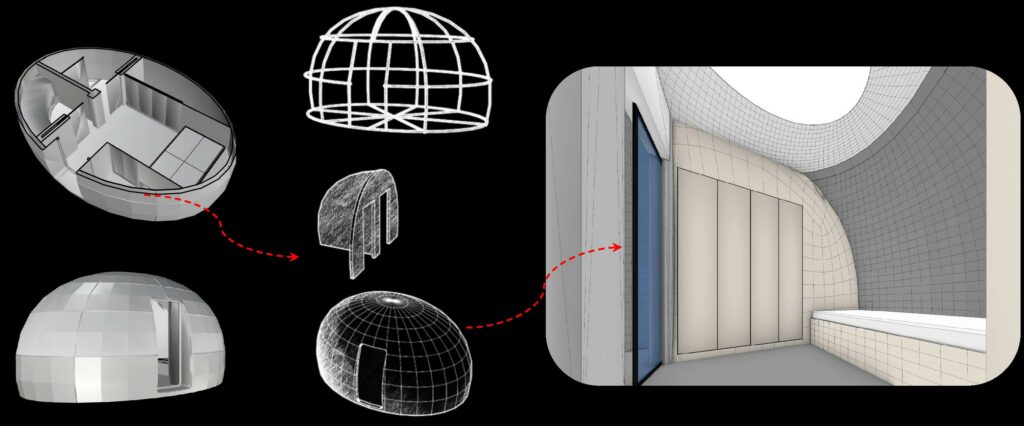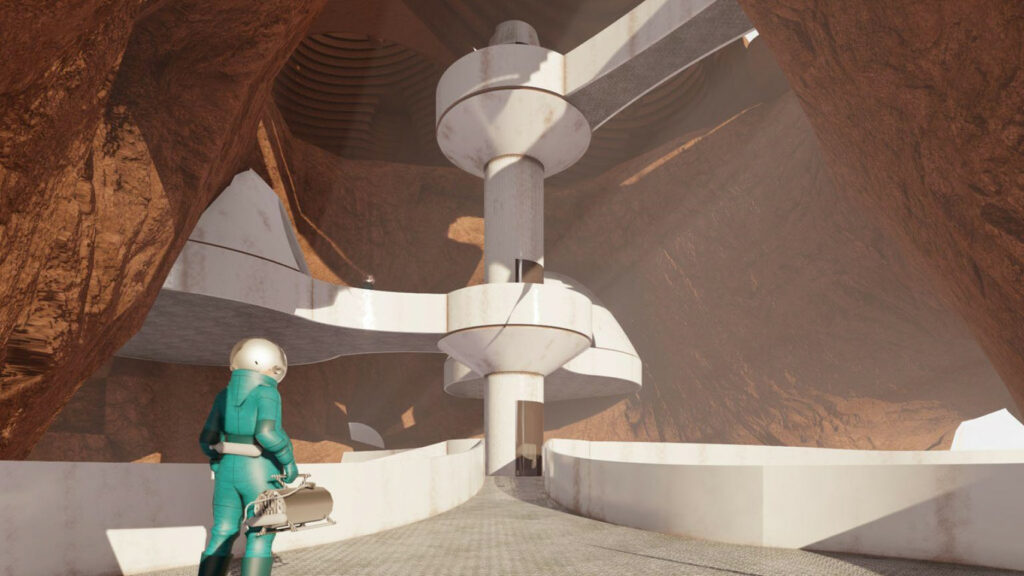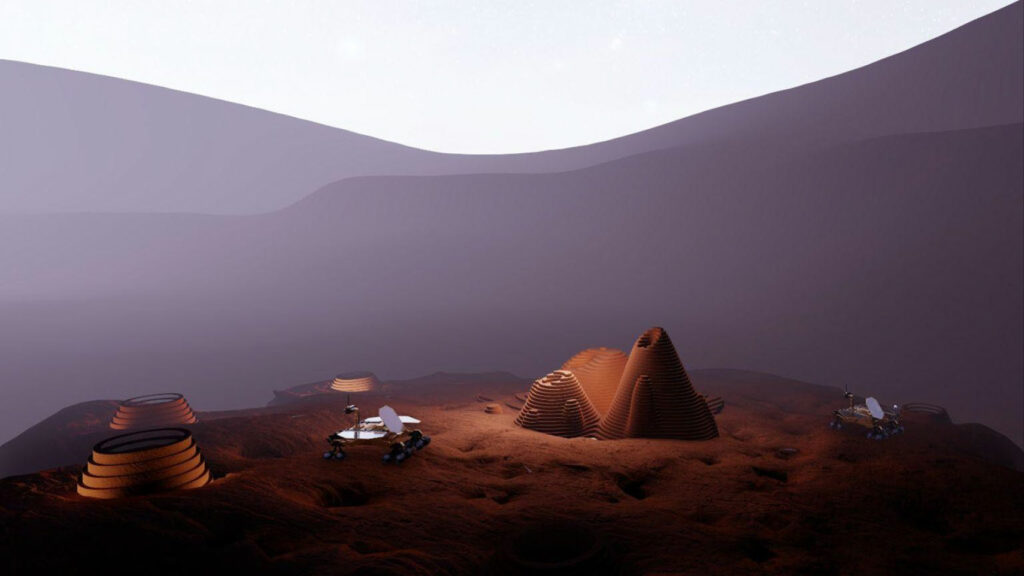Concept
Our approach for the project was focused on the spiritual aspect of life on mars. We wanted to explore what does spirituality mean beyond survival for the individual, the group, the collective and beyond..?
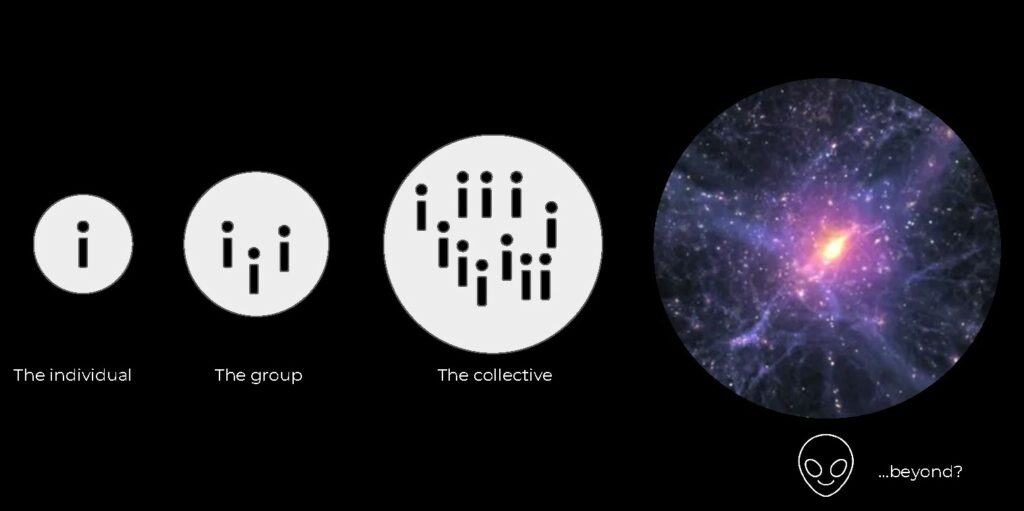
We started by the site selection. By positioning our project on a relatively flat portion of the designated construction region, we have opted for a secluded area which would provide both; ease of construction and access.
To emphasize on the spirituality aspect of our concept, we have decided to position our colony underground, with just the access “Ant hills” protruding above ground..
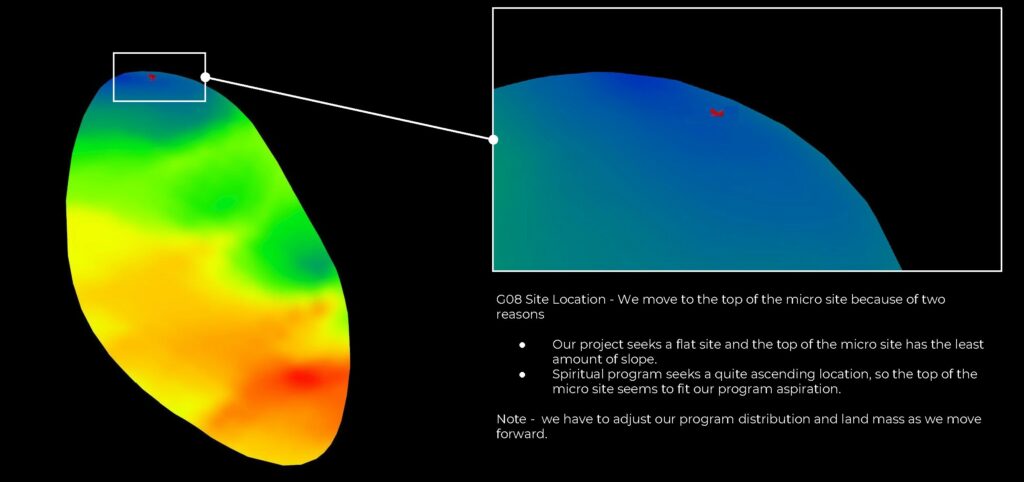
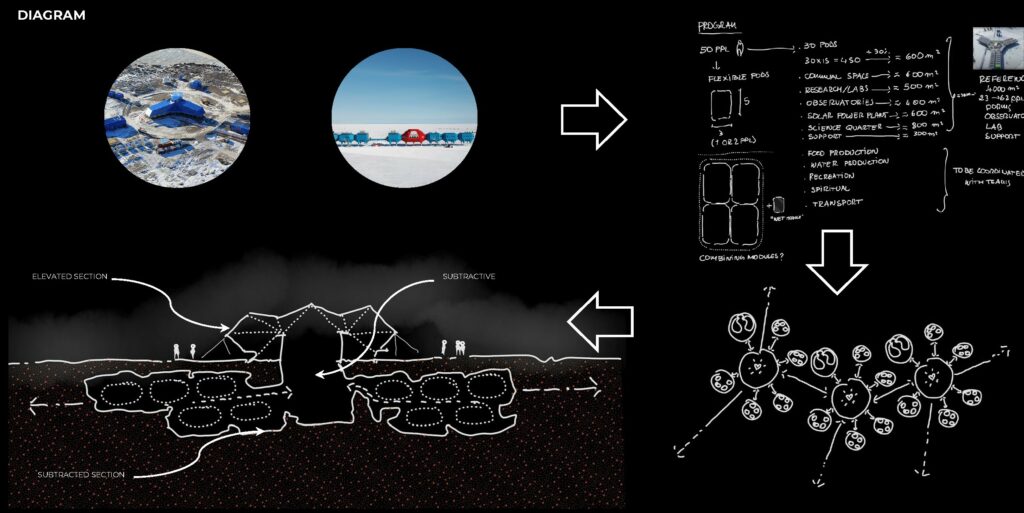
Program Development
As we developed the program, we looked at different aspects of the spiritual life on a personal, social, creative level and the separation between them for privacy. This led to the initial diagram of the colony, showing the main spiritual heart in the middle with iso pods, group meditation, creative pods and learning pods with links to the residential pods
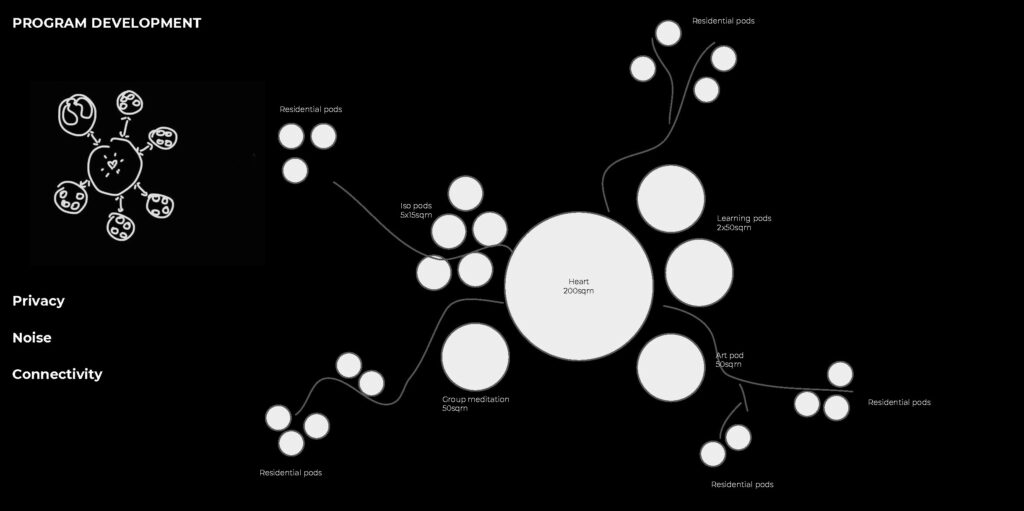
Inspiration
As our colony is mainly underground, we were inspired to look into the most efficient tunnel diggers we know of, ants…as you can see in those images, this is a massive ant colony network in Brazil showing the intricate pattern and middle heart similar to our initial diagram

Ants use a behavioral algorithm that allows them to choose which grains to remove! That algorithm does not exist within a single ant,” he says. “It’s this emergent colony behavior of all these workers acting like a superorganism. How that behavioral program is spread across the tiny brains of all these ants is a wonder of the natural world we have no explanation for.
As ants remove grains of soil, they are subtly causing a rearrangement in the force chains around the tunnel. Those chains, somewhat randomized before the ants begin digging, rearrange themselves around the outside of the tunnel, sort of like a cocoon or liner. As they do so, two things happen: 1.) the force chains strengthen the existing walls of the tunnel and 2.) the force chains relieve pressure from the grains at end of the tunnel where the ants are working, making it easier for the ants to safely remove them.
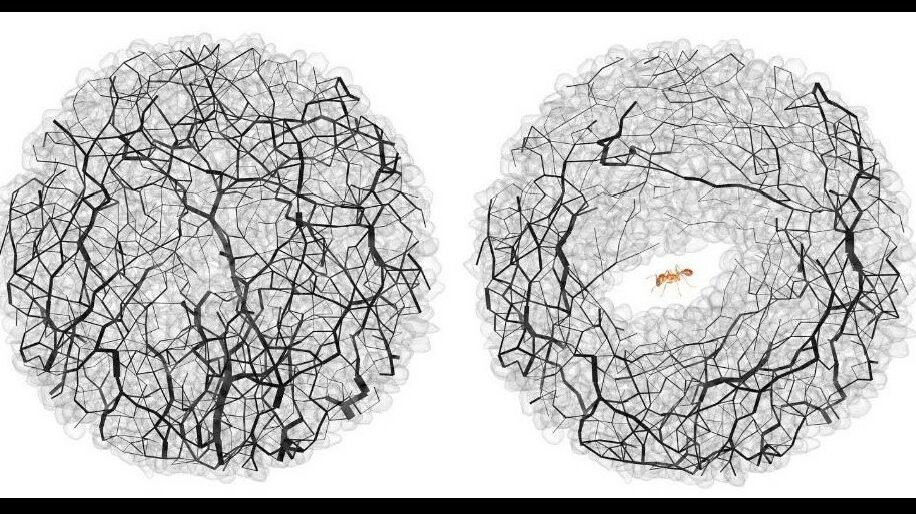

Lidar drones/satellite technology can help identify potential existing underground cavities as well as less dense parts of the soil This would help identify best locations for the tunneling process.
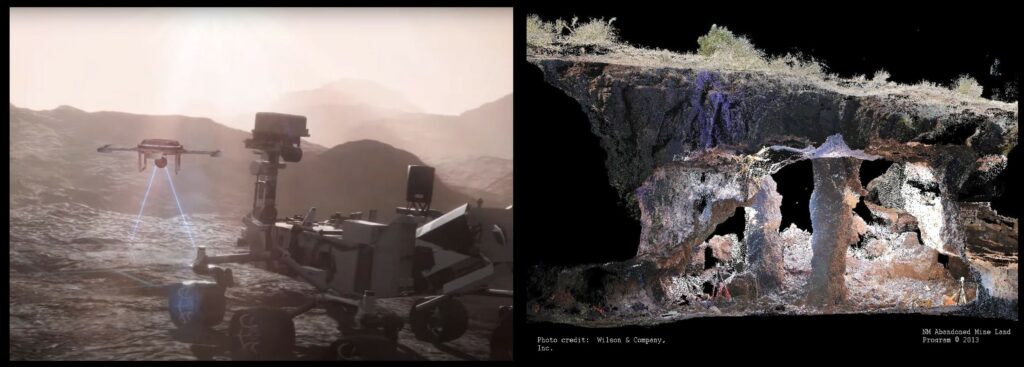
Computational experimenting
By leveraging the available computational tools, we asked ourselves, Can we recreate this by starting with LiDAR technology to identify the soil characteristics? Then applying the ants swarm algorithm to try to identify the most efficient path between the food storage, in our case, the residential pods
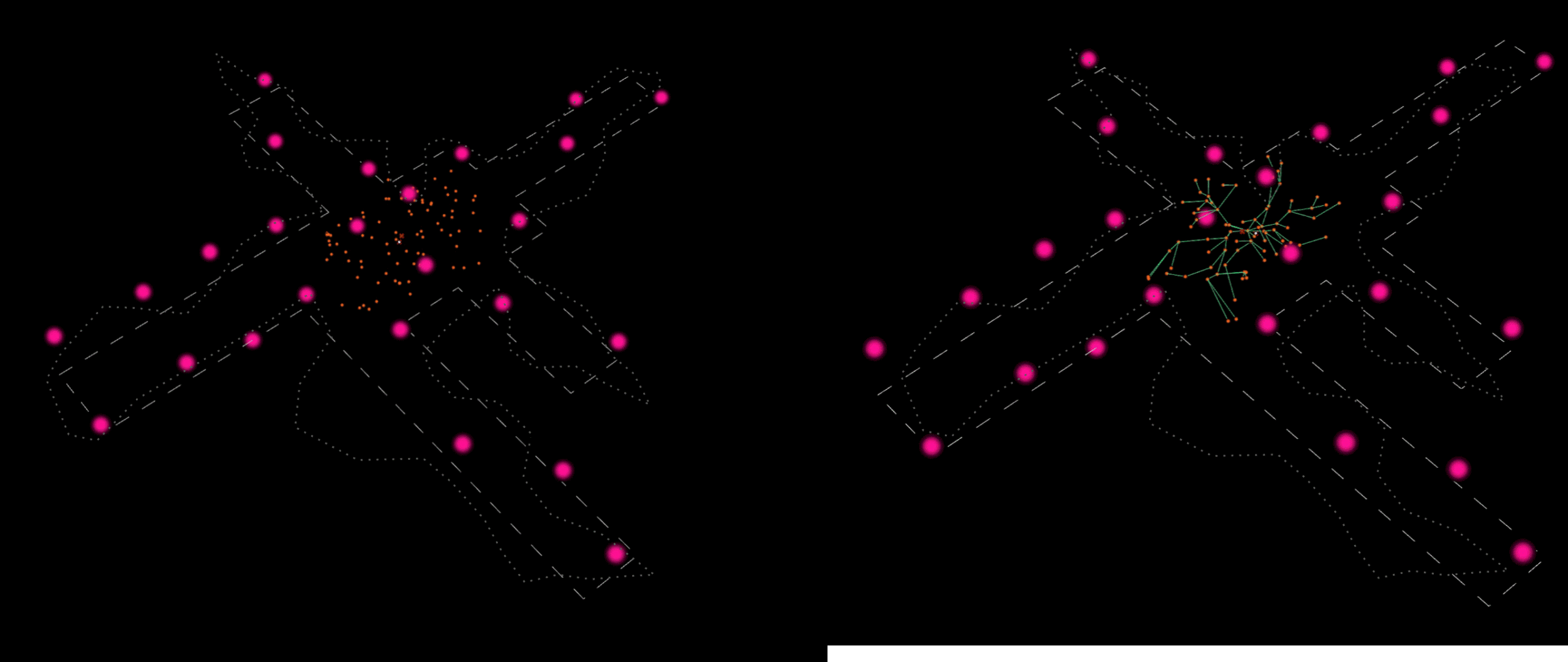
Our early explorations were not very successful, although quite interesting! So we thought about trying to follow the collective trail of the ants rather than the individual movements
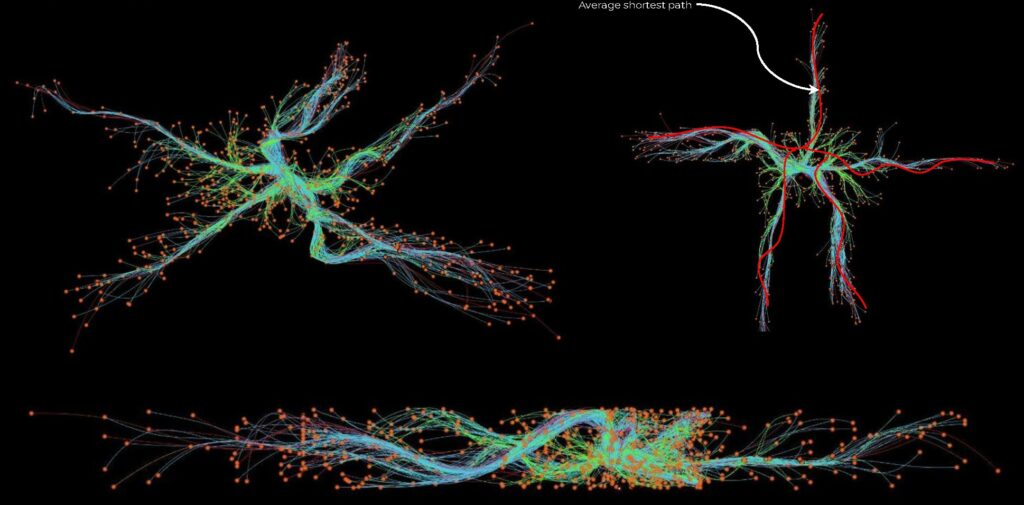
As we developed further, the idea started to become more tamed as we optimized the paths from the heart to the pods
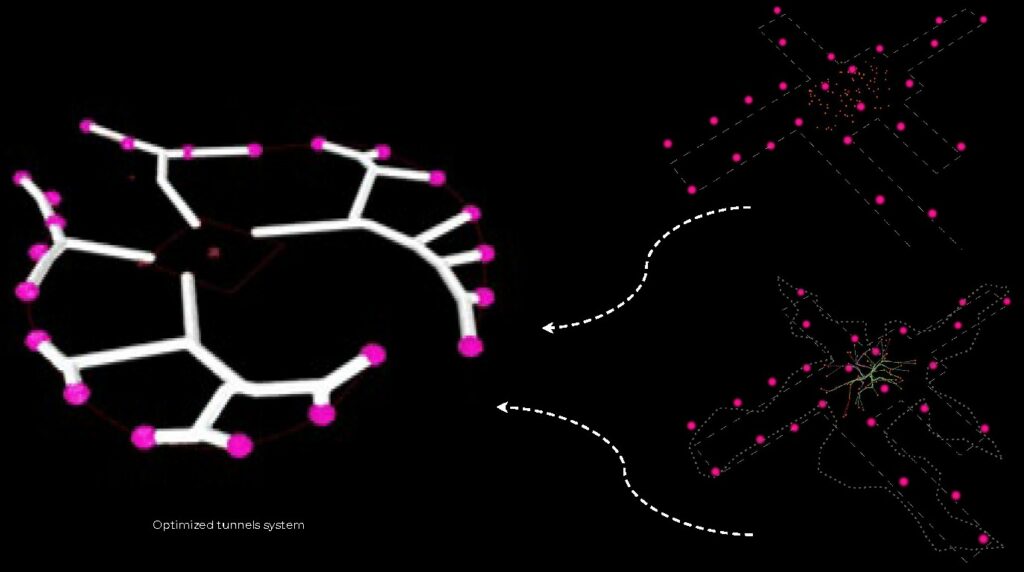
Computational Approach
Our computational approach was simple, to divide the different elements of the project to simulation then above and below ground and we will go through the different strategies.
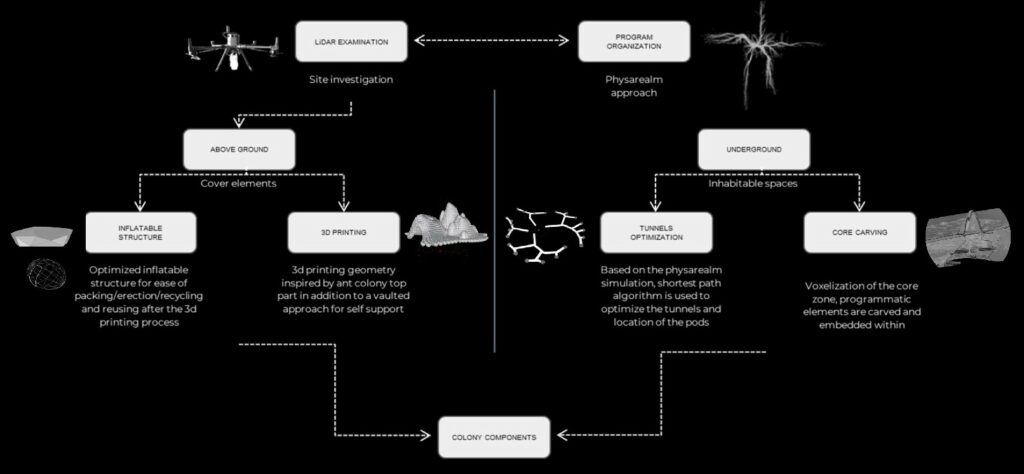
Construction Strategy
Since our construction is divided into two parts; above ground and below ground, we thought to follow these two strategies; for the 3d printing, the strategy is to use the temporary inflatable structure to control and protect against the environment, and for the second, we found interesting aspirational research from tudelft and nasa about nano robots that can be programmed based on the same ants swarm algorithm to dig the tunnels.


Development
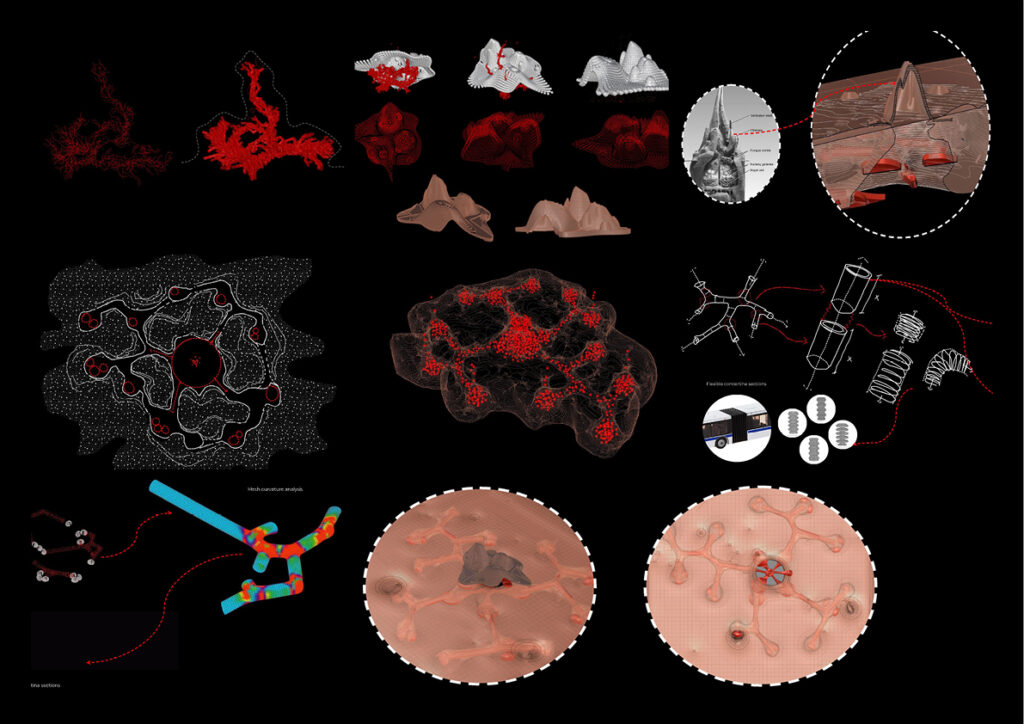
Living Pods and Future Expansion
